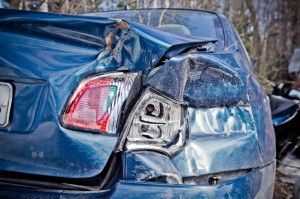
Every year, there are more than 2.5 million rear-end collisions in the United States, as reported by the National Safety Council, making them the most common type of automobile accident. Rear end accidents happen when drivers are stopped at traffic lights or stopped in congested traffic, and are unable to avoid the accident because they are surrounded by other cars. Common factors involved in rear end collisions include driver distraction or inattention, panic stops, tailgating, and reduced traction due to poor weather or worn pavement.
Liability in Rear End Accidents
Liability in a rear-end collision is usually pretty straight forward. If Vehicle A is struck from behind by Vehicle B, the driver of Vehicle B will almost always be assessed blame. The reason for this is that fundamental traffic laws require drivers to be able to stop safely if the vehicle, or vehicles, in front of them slow down or stop suddenly. The law dictates that if the following vehicle cannot stop when the lead vehicle does, the driver was not being as safe as they had a duty to be.
However, there are instances when the lead car could be held liable. If a driver brakes suddenly to turn, and fails to execute that maneuver, if a driver backs up suddenly, or if a vehicle’s brake lights do not function properly, are all situations where the lead driver would be at least partly at fault.
Injuries Caused by Rear End Accidents
Rear end accidents are also called “whiplash accidents” because the nature of the collision often results in a whiplash injury for the driver of the front car. Whiplash describes a range of injuries to the neck related to a sudden distortion of the neck. Symptoms can occur immediately or be delayed several days.
Although whiplash is certainly the most common injury suffered in a rear end accident, it is not the only one. The following are other personal injuries that could be sustained as a result of a rear end collision:
- Strains, sprains, and other injuries to the muscles and tendons in the back
- Disc herniation resulting from compression of the spine
- Spinal cord injuries resulting in permanent disability
- closed head injuries resulting in traumatic brain injury
- Face and head injuries from the airbag
- Wrist, finger, hand, and arm injuries
- Seatbelt injuries
Even at low speeds, serious injuries can result from rear end accidents. Never underestimate an injury or dismiss any pain, bruising, or inflammation after an accident, and contact experienced representation right away.
